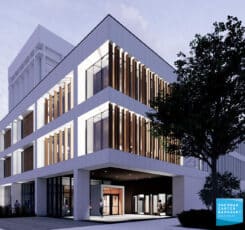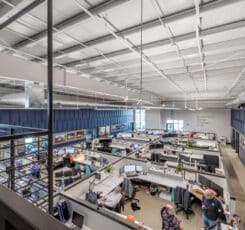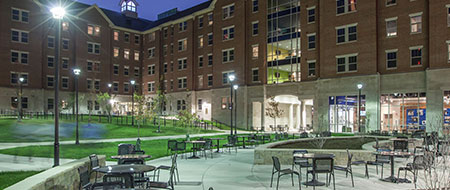What follows are some thoughts gleaned from our ongoing reading, researching & observations.
BROAD OBSERVATIONs
In part from recent articles in The Chronicle of Higher Education and Inside Higher Ed:
- Plans for Fall 2020: 73% of early reporting institutions plan to re-open with in-person classes; 15% are waiting to decide what to do; 5% are planning for a hybrid model (in-person and online); 5% are still looking at a range of scenarios, and only 2% will start back up in Fall 2020 with online classes:
- Declining enrollment: Four-year colleges may be looking at a loss of up to 20% in fall enrollment. Early on, 14% had said they were unlikely to return to their current college or university in the fall, or it was “too soon to tell.” Three weeks later, in mid-April, that figure had gone up to 26%.
- Alternative plans: 10% of college-bound seniors who had planned to enroll at a four-year college before the COVID-19 outbreak are saying they have made alternative plans.
- Gap years may be gaining in popularity. There are estimates that 3% of freshmen take a gap year in normal circumstances. Since the pandemic, internet searches for gap years have skyrocketed.
- College students do not like the online education they have been receiving. To finish their degrees, 85% want to go back to campus, while only 15% want to finish online.
- Moody’s bond ratings for financially stressed institutions are being downgraded making bond sale financing for capital projects less attractive.
- Public funding for capital projects will decrease unless at a later date federal funding is made available for “shovel ready projects” as a way to encourage economic growth.
- There are concerns: Will students behave responsibly and what can be done to encourage good behaviors in off-campus social events?
STUDENT RESIDENCE OBSERVATIONS
- Community bathroom style traditional residence halls are a real problem. Residences with units that have in-suite bathrooms are more desirable now than ever. Parents and students are uncomfortable with community bathrooms and their potential for disease transmission.
- Off-campus apartments are often doing surprisingly well in the crisis. There is an emerging mini-trend for students to leave traditional residences with community bathrooms in favor of off-campus apartment-style residences with in-suite bathrooms. Off-campus apartments can allow social distancing while still providing access to on-campus learning opportunities.
- Residence halls with in-suite bathrooms, robust IT support, and controlled living/learning commons facilities large enough to accommodate social distancing should be at a premium on campuses and should have no trouble leasing.
BROAD TRENDS:
Moving forward, these trends seem to be emerging:
- Closures: Some smaller schools will have trouble keeping their doors open and will close.
- Larger “flagship” institutions may benefit (and even grow) as smaller schools close. While all institutions are at looking declining enrollments due to the pandemic, as smaller schools close, a new pool of potential students will look to continue their education at healthy, larger institutions. This may become a recruitment focus for larger institutions.
- The investment market is currently frozen but should snap back. With their strong revenue streams, P3 student residences will remain an excellent investment.
- High unemployment often leads to an increase in enrollment. When few jobs are available we have traditionally seen an increase in enrollment as people look to gain expertise and qualifications for a limited jobs pool.
STUDENT RESIDENCE TRENDS
- Reconfiguring residence halls to allow for better social distancing is a universal trend.
- Pressure to replace community bathroom style traditional residence halls with suite-style residences and apartments is increasing.
- P3 development for on-campus student housing will continue to be a significant source of funding and may grow. P3 development will also continue to expand beyond student housing and into other campus building types.
QUESTIONS
- What replaces community-style bathroom traditional residence halls? It seems clear that the community bathroom model, even when updated to provide more privacy, is in trouble. Simply replacing these buildings with a suite-style residence hall may not always be ideal. We know that the traditional residence hall has value, particularly for incoming freshmen, because of the regular opportunities for interaction and socialization. What will we need to do to ramp up interaction and socialization opportunities in the more private suite-style residence?
- When trying to retrofit existing facilities, what do we do about:
- Elevators in high rise buildings.
- Double occupancy rooms.
- Enforcement of social distancing requirements.
- Narrow hallways.
- Cleaning in private rooms and en-suite bathrooms.
- Will austerity lead to a more economical design for residence halls with fewer amenities and lower lease rates?
- With pedagogy models changing to include increasing numbers of “hybrid” classes with both online and in-person learning, what can be done to encourage learning opportunities in residence halls?
Now that you’ve read about our research and thoughts, we’d love to learn more about how the COVID-19 pandemic is affecting your institution’s student housing.
If you haven’t already, we’d truly appreciate your feedback by taking this short survey.
Thank you in advance for your involvement. We truly appreciate your feedback. We look forward to sharing the results in the weeks to come.



